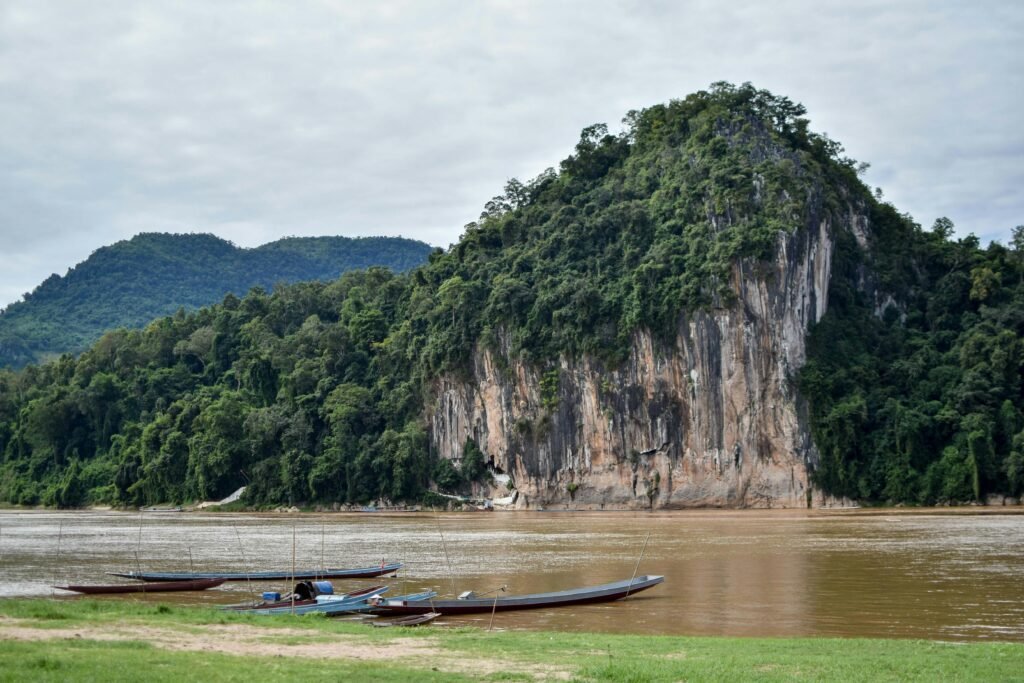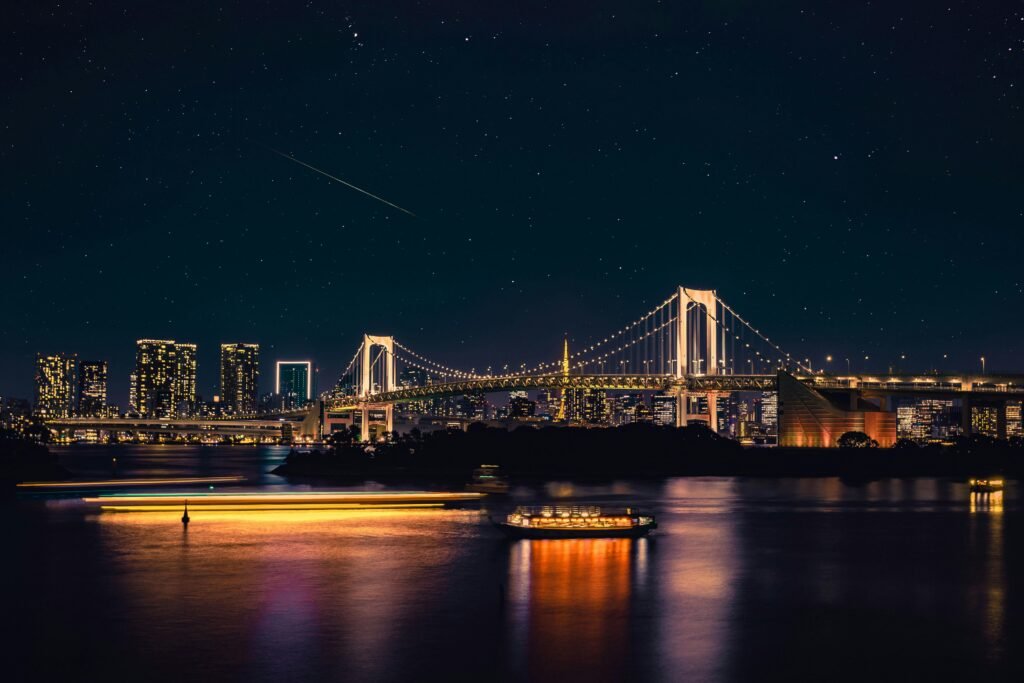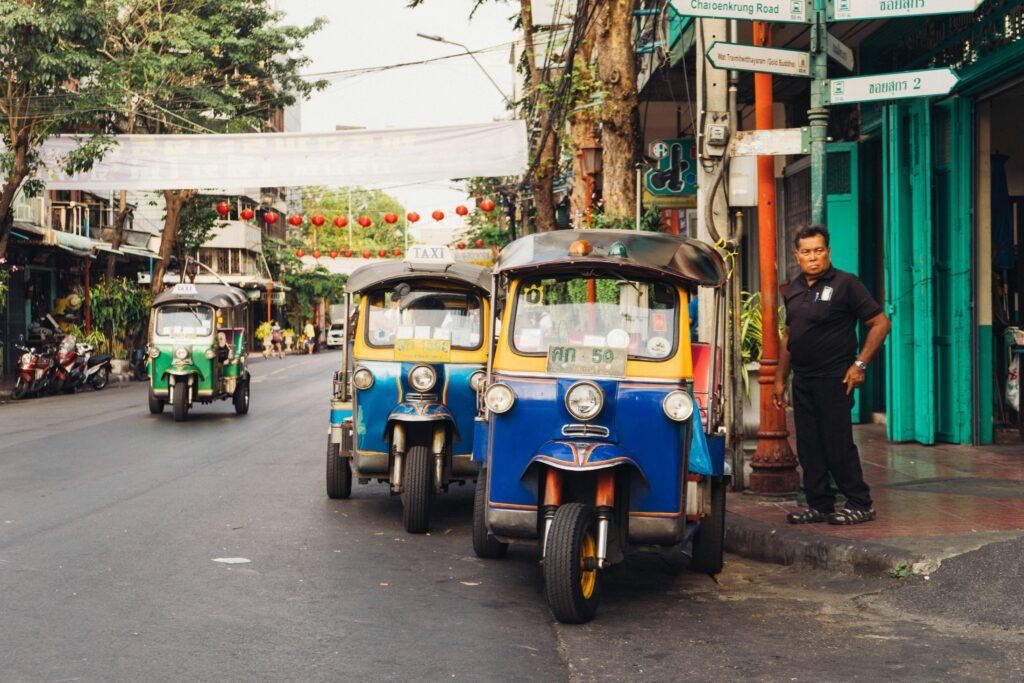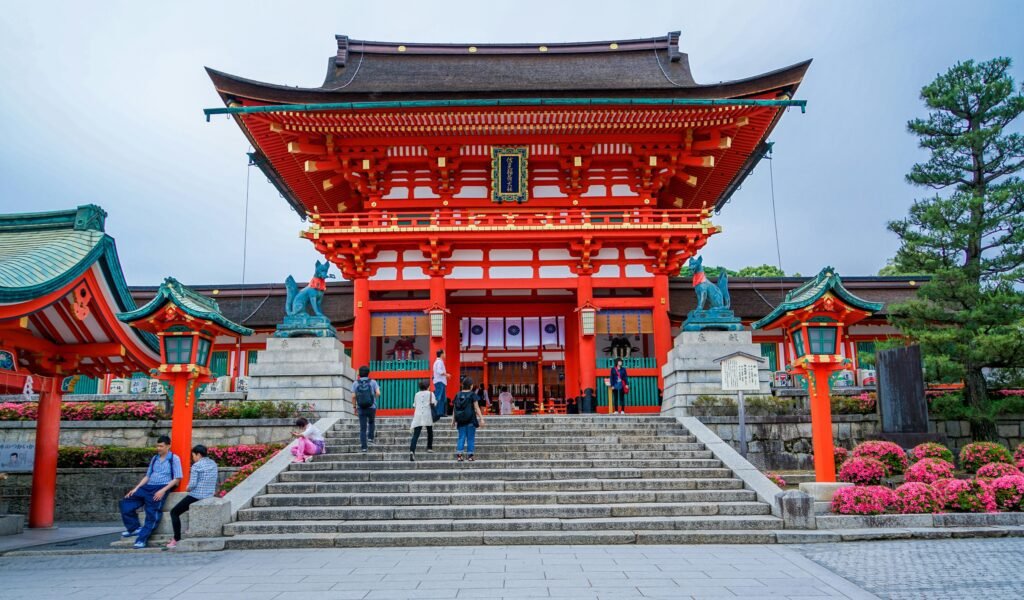
Luang Prabang is one of those rare places that lives up to the hype. Wrapped in river light where the Mekong meets the Nam Khan, the former royal capital blends golden wats, Indochine villas and jungle hills into an easy, unhurried rhythm. If you’re planning your first trip or returning to go deeper, this insider guide brings together essential history, practical tips, hand‑picked places to eat and stay, two ready‑made itineraries (plus a rail add‑on) and thoughtful advice for families, couples and solo travellers.
Why Luang Prabang Captivates
There’s a reason this compact peninsula of saffron-robed monks and frangipani-scented lanes remains Southeast Asia’s slow‑travel sweetheart. Mornings begin with the quiet devotion of tak bat (the alms‑giving), afternoons melt into temple courtyards and neighbourhood markets, and evenings unfurl along the pedestrianised night market. Days stretch, pace softens, and somehow there’s still time for a waterfall swim or a Mekong sunset cruise. For UK and international visitors, it’s an easy long‑haul that rewards both careful planning and aimless wandering.
A Short Background (for Context, Not a Test)
Luang Prabang rose to prominence as the seat of the Lan Xang (“Million Elephants”) kingdom, later becoming a French protectorate and the royal residence of Laos in the late 19th and early 20th centuries. Monastic learning has shaped civic life for centuries; the townscape folds together gilded wats, teak houses and a modest grid of colonial villas, one reason UNESCO recognises the entire historic centre as a living heritage landscape rather than a single monument. The result is a city that changes with the day: bells and chanting before dawn, schoolchildren cycling to class, markets and monks threading through the lanes, and the glow of sunset on the Mekong’s brown‑gold water.
Essential Facts & Figures at a Glance
- Location: Northern Laos, at the confluence of the Mekong and the Nam Khan rivers.
- UNESCO: The entire historic town is protected for its blend of Lao and colonial urban fabric.
- Getting in: Fly from regional hubs (Bangkok, Hanoi, Vientiane and others) into Luang Prabang International (LPQ); or arrive by the Laos–China Railway from Vientiane (high‑speed trains cut the journey dramatically).
- Seasonality:
- Cool & dry (Nov–Mar): Blue skies, ideal for sightseeing; peak visitor numbers.
- Hot (Apr): Temperatures spike; Pi Mai Lao (Lao New Year) brings exuberant water‑festival celebrations.
- Green/rainy (May–Oct): Afternoon showers, lusher countryside, fuller waterfalls.
- Currency: Lao kip (cash is still king; ATMs are sprinkled through town).
- Temple etiquette: Shoulders and knees covered; shoes off at thresholds; step quietly.
What to See & Do
The Temples (Wats) You Shouldn’t Miss
- Wat Xieng Thong: The city’s most celebrated temple complex, showcasing exquisite mosaics and sweeping, low‑slung roofs. Arrive early to take in the intricate Tree of Life mosaic without the crowds.
- Wat Mai Suwannaphumaham: Known for its gilded bas‑reliefs, often an easy add‑on after the morning market.
- Wat Visounnarath & That Makmo: A quieter compound with a distinctive watermelon‑shaped stupa.
For families: frame temple visits as a “treasure hunt”, count nagas, lotus motifs and guardian figures. Bring sarongs for quick cover‑ups and set a 30–40‑minute timer to keep energy high.
Royal Palace Museum (Haw Kham)
The former royal residence anchors the peninsula with manicured lawns and a compact museum telling the story of the monarchy. You’ll see ceremonial rooms, royal cars, and the small temple housing the Phra Bang image that gives the city its name. Bags and photos aren’t allowed inside; use the free lockers and enjoy the screen‑free moment.
Mount Phousi
A broad staircase climbs this sacred hill in the heart of town. Sunrise is serene; sunset is a social event. If you’re crowd‑averse, go an hour before sunset, enjoy the views, then watch golden hour from the riverside instead.
Night Market & Morning Market
From late afternoon, Sisavangvong Road fills with textiles, baskets, lanterns and snacks. In the morning, the fresh market wakes early behind Wat Mai, perfect for fruit shakes, chilli pastes and a whirl of daily life. Bargain with a smile; crafts are often made upcountry and sold by families who’ve travelled in to trade.
Kuang Si Waterfalls (Day Trip)
Thirty-ish kilometres south of town, Kuang Si’s multi‑tiered cascades tumble into limestone pools the colour of jade milk. Swim in the signed pools (others are sacred or unsafe), take the short rainforest trail to the main fall, and factor time for the excellent Tat Kuang Si Bear Rescue Centre at the entrance.
Good to know: The on‑site shuttle from the gate up to the trailhead streamlines the visit; bring reef‑safe sunscreen and water shoes.
Pak Ou Caves (Half Day by Boat)
A Mekong cruise upstream delivers you to a cliffside set of caves filled with thousands of Buddha figures, offerings made over centuries. The river journey is as much the point as the caves; pair with a stop at a riverside village for handicrafts or paper‑making.
Ock Pop Tok Living Crafts Centre
Hands‑on weaving, batik and natural dye classes led by master artisans, set in a garden on the Nam Khan. Even if you don’t weave, the riverside café and textile gallery make this a lovely pause.
Laos Buffalo Dairy (Family Favourite)
A social enterprise on the Kuang Si road where you can meet buffalo, try tangy cheeses and indulge in excellent ice cream. Children love the tours; adults tend to leave with a deeper understanding of rural livelihoods.
Ethical Elephant Encounters
If you wish to see elephants, choose observation‑only, no‑riding experiences that prioritise welfare. Small‑group forest walks led by conservation‑focused teams are the most responsible option.
UXO Laos Visitor Centre (Powerful & Important)
A sobering, compact exhibition explaining the legacy of unexploded ordnance in Laos. It’s eye‑opening for older children and teens, and a vital context for travel in the country.
The Alms‑Giving (Tak Bat): How to Observe Respectfully
The dawn ritual of monks receiving offerings is a religious practice, not a performance. If you choose to participate, buy fresh sticky rice from the morning market rather than vendors who appear only for tourists, dress modestly, keep silent, and never use flash. The most respectful option for many visitors is to observe quietly from a distance and refrain from photographing faces.
Practicalities: Getting There & Around
Flying
There are regular regional flights into Luang Prabang International (LPQ) from Bangkok, Hanoi and Vientiane (among others). Most UK travellers connect in Southeast Asia; allow ample layover time if travelling with checked bags.
From the UK in practice: The simplest routings are London/Manchester → Bangkok (or Hanoi) → Luang Prabang, with the final hop on a regional carrier. If you’re combining Laos with Thailand or Vietnam, consider an open‑jaw ticket (e.g., fly into Bangkok and out of Hanoi) to avoid backtracking.
By Rail
The Laos–China Railway has transformed domestic travel. High‑speed services link Vientiane, Vang Vieng and Luang Prabang in around two hours from the capital, with reserved seating and airport‑style security at stations. Book early in peak months.
The Laos–China Railway has transformed domestic travel. High‑speed services link Vientiane, Vang Vieng and Luang Prabang in around two hours from the capital, with reserved seating and airport‑style security at stations. Book early in peak months.
Local Transport
- On foot & by bike: The peninsula is walkable; many hotels provide bicycles.
- Tuk‑tuks & private drivers: Negotiate fare in advance. For Kuang Si, allow at least half a day, including the 45–60‑minute drive each way.
- Boats: Mekong sunset cruises and transfers to riverbank restaurants are easily arranged along the promenade.
Accessibility
Historic steps and uneven pavements are common. Many sights are outdoors with shade but little seating; plan regular café stops, consider riverside itineraries, and choose centrally located accommodation to reduce transfers.
When to Go (and What It’s Like)
- November–February (Prime months): Bright days around 20–26°C, low humidity, river levels still high for scenic boat trips; coolest evenings – pack a light layer.
- March–April (Hot season): Daytime highs over 30°C; earlier starts help. Lao New Year, mid‑April brings joyous, city‑wide water fights – fun for families, but book far ahead and expect closures.
- May–October (Green season): Afternoon showers (often brief), lush rice paddies and full‑flow waterfalls. River trips can be more dramatic; the bamboo bridge across the Nam Khan is usually dismantled during peak rains and rebuilt when levels drop.
Where to Eat & Drink
- Tamarind (Ban Wat Sene): Lao tasting menus and an excellent cooking school – ideal for couples and food‑curious families.
- Manda de Laos: Candlelit dining around UNESCO‑listed lily ponds; a photogenic treat for special occasions.
- Saffron Coffee: Riverview espresso and pour‑overs featuring beans grown by upland farmers; good for light breakfasts.
- Bouang (Asian Eatery): A cheerful, modern bistro on the main street – great for mixed groups, vegetarians and kids.
- Utopia: Nam Khan‑side lounge for smoothies by day and cocktails at dusk; yoga in the mornings.
Street snacks you’ll see (and should try): khao jee (Laotian baguette sandwiches), jeow bong chilli dip with riverweed crisps, and coconut pancakes hot off the griddle.
Where to Stay (By Style & Budget)
Boutique‑Luxury
- Amantaka: A serene sanctuary in a heritage compound; outstanding spa and service – honeymoon and milestone‑trip territory.
- Rosewood Luang Prabang: Bill Bensley‑designed hideaway in a forested valley – riverside villas and hilltop tents feel escapist yet close to town.
- La Résidence Phou Vao: Elevated views and a languid pool; classic Indochine elegance.
Design‑Forward Mid‑Range
- Maison Dalabua: Wooden walkways over lotus ponds; spacious rooms and a destination restaurant.
- Le Sen Boutique Hotel: Small, modern and friendly – easy walk or cycle to the peninsula.
- 3 Nagas (MGallery): Characterful rooms spread across restored heritage houses in the old town.
Good‑Value Guesthouses
- Riverside B&Bs along the Nam Khan or quiet lanes off the main street are perfect for solo travellers and families who prefer informal stays. Look for bicycle availability, interconnecting rooms and proximity to the night market.
Booking tips: Peak season fills early; many properties include transfers and bikes. For families, confirm bed configurations and pool fencing in advance.
Suggested Itineraries
1) The Perfect One‑Day Primer (Walkable)
07:00 Observe tak bat respectfully from a distance; grab a quiet coffee afterwards.
08:30 Royal Palace Museum (1 hour), then stroll past vendors setting up the night market to Wat Mai.
10:30 Wander the lanes toward Wat Xieng Thong (allow 45–60 minutes).
12:00 Lunch at Saffron Coffee or a Mekong‑side café.
14:00 Cross to the Nam Khan for the Ock Pop Tok gallery and crafts centre shuttle (tour/mini‑class or simply browse the textiles).
16:30 Climb Mount Phousi for late‑afternoon light.
18:00 Drift through the night market and eat your way through street‑food stalls or book Manda de Laos for dinner.
For families: Break up temple time with an ice‑cream stop and a short long‑tail boat hop across the river.
2) Two–Three Days in and around Luang Prabang
Day 1: Follow the one‑day primer, then add a Mekong sunset cruise (1–2 hours) with snacks.
Day 2:
- Morning: Head to Kuang Si Waterfalls (45–60 minutes each way). Swim, walk to the main fall, and visit the bear rescue centre (3–4 hours total). On the return, stop at Laos Buffalo Dairy for a short tour and ice cream.
- Afternoon: Pool time back at your hotel or a textile workshop at Ock Pop Tok.
- Evening: Dinner at Tamarind (reserve ahead); consider the night market for souvenirs (scarves, handwoven table runners, bamboo baskets).
Day 3 (optional):
- Morning: Boat upriver to the Pak Ou Caves (allow ~4 hours round‑trip with stops).
- Afternoon: Visit the UXO Visitor Centre or pop into smaller wats you missed.
For couples: Swap the cruise for a private long‑tail to a riverside restaurant; book a spa treatment on your final afternoon.
For solo travellers: Join a cooking class (easy way to meet people), or take a half‑day bike tour to outlying villages.
Add‑On by Rail: Vientiane or Vang Vieng (1–3 Days)
The high-speed railway makes it effortless to combine Luang Prabang with the karst landscapes of Vang Vieng (for zip lines, cave lagoons and sky‑blue viewpoints) or the café‑packed capital, Vientiane (COPE Visitor Centre, riverside sunsets). Trains are clean, fast and popular – book in advance and allow time for ID checks at stations.
Practical Tips (That Make a Big Difference)
Money & Connectivity
- ATMs accept international cards, but withdrawal limits can be modest; carry smaller kip notes for markets and tuk‑tuks.
- Wi-Fi is common in cafés and hotels; buy a local SIM or eSIM for better coverage on day trips.
Power & Packing
- Laos uses 230V/50Hz electricity with mixed plug types in older buildings; bring a universal adapter and a small multi‑USB charger.
- Pack light, breathable clothing and a temple‑ready layer (scarf or sarong). Quick‑dry towels and water shoes are handy for waterfalls.
Health & Safety
- Stick to bottled or filtered water; avoid swimming near river confluences after heavy rain.
- Mosquito repellent is essential; pack a small first‑aid kit for scrapes at waterfalls.
- Trails and temple steps can be slick – wear trainers or hiking sandals with grip.
Responsible Travel
- Choose no‑riding elephant experiences and avoid venues with performances.
- Ask before photographing people; skip buying caged birds at temples (releasing them fuels trapping).
- Buy crafts directly from makers where possible: the fair‑trade boutiques of weaving collectives ensure income returns to villages.
Etiquette & Photography
- Temples are living places of worship – move slowly, keep voices low, and never point your feet at Buddha images.
- During tak bat, keep a respectful distance, stay lower than the monks if you participate, and never use flash.
- Royal Palace Museum: no photos inside; modest dress required.
- Drones: Permits are required in Laos and restrictions are tighter in UNESCO zones – don’t fly without explicit permission.
Transport & Tickets
- For Kuang Si, agree on your return time with drivers before paying in full.
- Riverboat timings vary with water levels; morning departures are smoother and less hot.
- The bamboo bridge across the Nam Khan is rebuilt each dry season – if you see it, it’s worth the small fee for the quintessential photo‑op and shortcut to riverside cafés.
Families
- Heat management is half the game: carry hats, hydration packs and cooling wipes; schedule indoor or shaded stops between 12:00 and 15:00.
- Many hotels offer adjoining rooms; if travelling with little ones, prioritise central stays to minimise tuk‑tuk time.
- Waterfalls are slippery – establish a “no running” rule and pack light microfibre towels.
Solo Travellers
- Luang Prabang is unfussy and welcoming; group classes (cooking, weaving) and dawn markets are easy ways to connect.
- Opt for centrally located guest houses, join shared transfers to Kuang Si, and lean into café culture for restful, people‑watching afternoons.
Couples
- Book a riverside table (try Manda de Laos or a Mekong‑view terrace) and time your dinner for golden hour.
- Splurge one night on a private sunset long‑tail low effort, high romance.
Seasonal Events & Special Experiences
- Pi Mai Lao (Lao New Year), mid‑April: Water‑splashing street fun, ceremonial washing of Buddha images, and parades – plan early and protect phones and cameras.
- Awk Phansaa (end of Buddhist Lent, October): Candlelit processions and illuminated boat floats on the Mekong.
- Boun That Luang (local temple festivals): Dates vary by lunar calendar – ask your hotel what’s on during your stay.
- Photography moments: Sunrise mist on the Mekong (dry season), banyan‑dappled courtyards at Wat Xieng Thong, and the turquoise pools of Kuang Si (go early for glass‑still water).
Broader UK Tie-ins: What Luang Prabang Teaches Us About Travelling Well at Home
Exploring Luang Prabang often nudges travellers to seek slower, heritage‑rich trips elsewhere. Back in the UK, you can echo the same ideas:
- World‑Heritage urbanism: Pair Luang Prabang’s living heritage with the City of Bath or Edinburgh’s Old and New Towns, where conservation coexists with daily life. Walkable cores, layered histories, café culture – same principles, different textures.
- River culture: Mekong sunset boats find a UK parallel in Thames skiffing near Richmond or slow canal days on the Kennet & Avon – unhurried, scenic, contemplative.
- Monastic footprints: Temples and monks here; ruined abbeys and priories there. Build a contemplative UK mini‑route linking Fountains Abbey (Yorkshire), Tintern Abbey (Wye Valley) and Lindisfarne (Northumberland).
- Craft & textile heritage: Weaving classes at Ock Pop Tok can spark a UK craft trail from Harris Tweed workshops in the Outer Hebrides to silk‑weaving history in Spitalfields and tartan mills in the Highlands.
- Rail‑enabled slow travel: Laos’s high‑speed link unlocks nature with less road time; at home, look to Scotland’s West Highland Line or Settle–Carlisle for scenery‑first itineraries that keep your footprint lighter.
Final Thoughts
Luang Prabang rewards an unrushed approach: early starts, long lunches, cool interludes in shady courtyards, and a sunset cruise to close. Treat it less like a checklist and more like a mood to inhabit. Whether you’re here with kids in tow, on a romantic escape, or embracing the pleasures of solo wandering, this small city will expand to fill the time you give it and send you home plotting the next slow journey.


